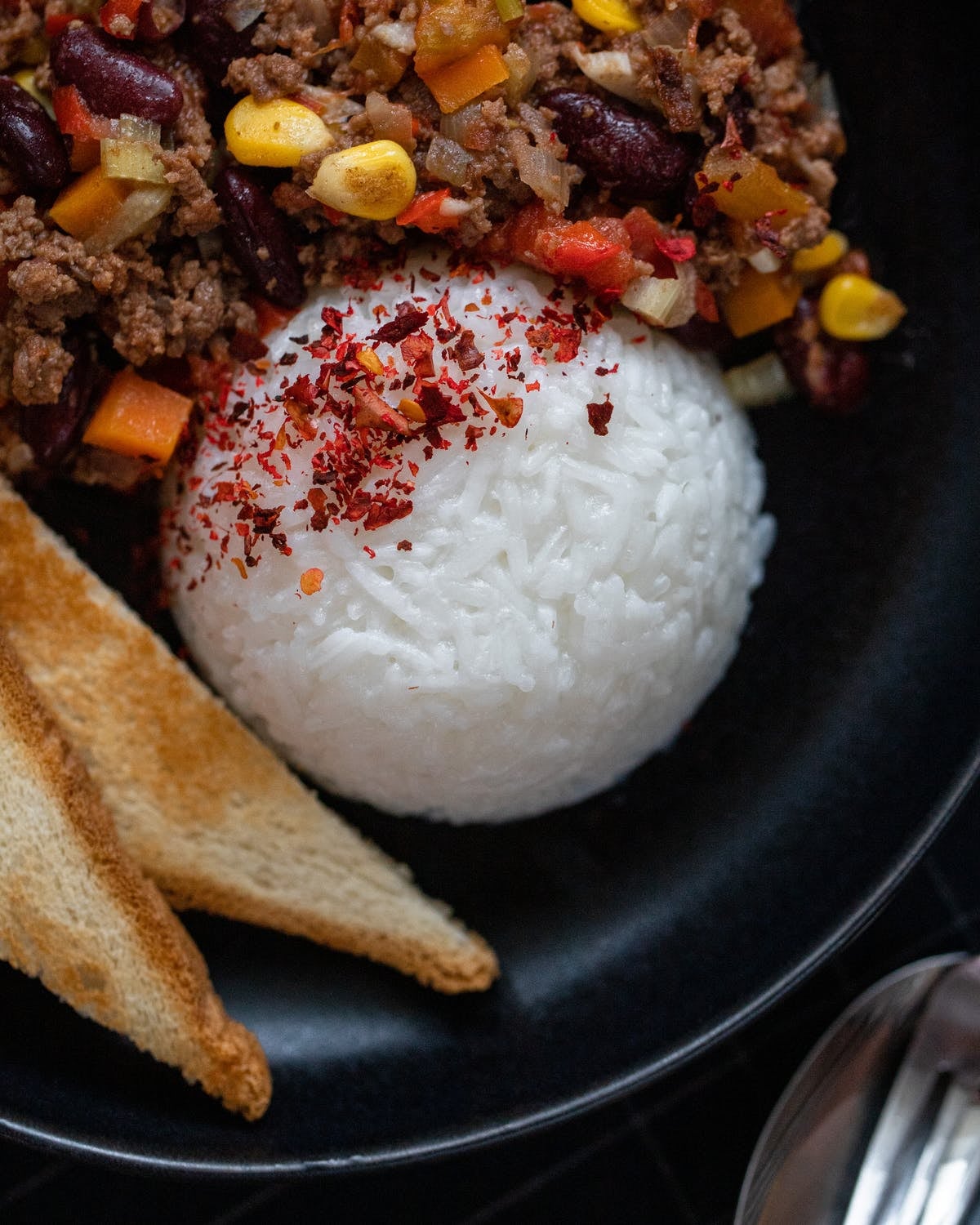Why Diets Need to Stop Demonizing Rice
White Rice Is a Staple in My Culture, and I’m Honestly Tired of Having to Defend It

Rice has been demonized for its unfriendliness to diets and waistlines. News stories and influences love to say that the carbs in this versatile grain are "empty calories," almost like white rice is junk food, even though it can be prepared in many healthy recipes. It is thought to have no real nutritional value and is only detrimental to a healthy diet because of its carb content. But when I think of rice, none of this comes to mind. I can close my eyes and imagine its ever-familiar comforting scent that's earthy, soft, and smells like a hug.
I was raised by my grandmother, who spent most of her life in the Philippines. Although we both had a rough upbringing, I knew I could always count on a home-cooked meal and a bowl of arroz caldo when I was sick. This dish is a rice porridge made with chicken and a savory, comfort-inducing broth filled with ginger, garlic, scallions, and black pepper. Every time I smelled the meal, I would instantly feel better.
"Have you eaten yet?" is a question I knew I would hear every day after I got home from school. "Yes, Lola, oh my god," I would reply with an adolescent eye roll. I envied other kids who got pop tarts and ham sandwiches while I had spam and rice for lunch. At home, I was often served rice with dinner, and sometimes breakfast as well. I once told my Lola that I would explode if I had to eat more rice. She laughed at me, obviously amused.
For Filipinos, plain white rice is a part of almost every meal, and it's prepared in many different ways. From savory Sinagang (garlic fried rice), to sweet and creamy Cassava Suman (rice cooked in coconut milk and steamed-wrapped in palm leaves), rice was a staple. My Lola loved to cook, and rice was never not on the menu. Like every other Filipino family we knew, our family always had a giant bag of it in the kitchen, no matter what.
I always ate the rice, even if I complained. I think I knew it made me different from the other kids at school to have food that was not theirs. It also reminded me of home and that was always comforting. My Lola also always made perfect rice, having the ideal fluffy and sticky texture. I know what it's like to be hyper-focussed on your body and be critical of everything you eat. Some things should be the exception, though, as these things can be more than food.
Rice is an affordable food staple always welcome in my budget kitchen, but some can view it as an inferior grain associated with poverty.
Rice is an affordable food staple always welcome in my budget kitchen, but some can view it as an inferior grain associated with poverty. A food that is considered cheap and straightforward shouldn't be regarded as inferior. Fancier grains such as quinoa and wild rice, which are fabulous, are thought of as "healthier." These grains are ancient, even if some of them are sold at boutique grocers and marketed on Instagram.
These grains, especially plain old white rice, existed before influencer marketing. White rice accounts for many meals all over the world in places like Latin America, India, and Mongolia. Its primary purpose as a filling side dish goes against what trendy celebrity nutritionists would consider "healthy." White rice is seen as one-dimensional and stereotypical, but that isn't the case. Its roots hold strong in many cultures, and has been prepared in a variety of complex ways.
Filipinos have a wide range of dishes, including veggies, fish, and rice is included in many of these meals. Rice alone is not a carb to be feared — it is a meal companion meant to be enjoyed, shared, and celebrated. Rice has deep roots in Filipino culture, and it was always around when I was growing up. I will continue to enjoy it and share it with my family.







